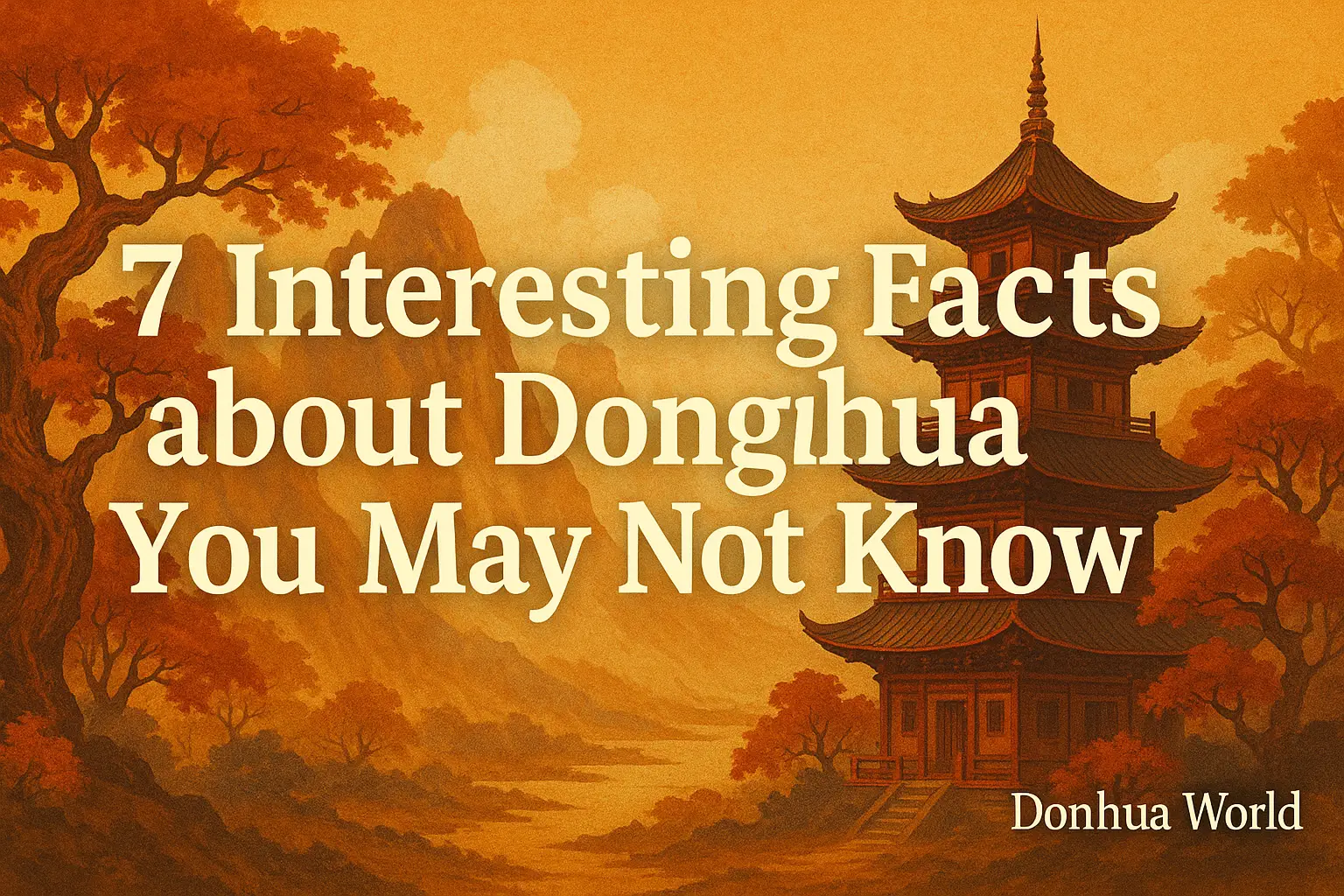Donghua, a term that resonates deeply with animation enthusiasts, represents the captivating world of Chinese animation. While anime from Japan often dominates global conversations, Donghua quietly shines with unique storytelling, vibrant artistry, and deep cultural roots.
But how much do you truly know about Donghua?
Today, we uncover 7 fascinating, lesser-known facts about Donghua that will forever change how you see it. Let’s embark on this mesmerizing journey!
Donghua is Older Than You Think
While many assume that Chinese animation is a relatively modern development, Donghua actually has roots dating back to the early 20th century.
- The first known Chinese animated film, Uproar in the Studio (1926), was produced by the Wan brothers, pioneers of Chinese animation.
- Inspired by Western techniques, yet deeply embedded with Chinese folklore and culture, early Donghua reflected a nation’s spirit of resilience and creativity.
- During the 1940s and 1950s, studios like the Shanghai Animation Film Studio rose to prominence, creating timeless classics.
Fun Fact:
The 1941 Donghua Princess Iron Fan became Asia’s first-ever full-length animated feature, predating Japan’s famous animated films by several years!
Donghua is Not Just for Kids
Unlike the widespread belief that animation is mainly for children, Donghua breaks this stereotype beautifully.
Many Donghua series and movies are targeted at teens, young adults, and even mature audiences.
Examples include:
- The King’s Avatar (Quan Zhi Gao Shou): A story revolving around professional esports players.
- Fog Hill of Five Elements: A visual masterpiece, darker and more philosophical than many Western cartoons.
- Heaven Official’s Blessing (Tian Guan Ci Fu): A complex tale of love, sacrifice, and redemption aimed at older audiences.
Insight:
Themes such as politics, war, existentialism, and historical philosophy are common in many Donghua productions, proving they are far more than simple entertainment.
Donghua vs Anime: They Are Different
Many people outside Asia often lump Donghua together with Japanese Anime.
While both are forms of animated storytelling, their cultural backgrounds, artistic styles, and narrative approaches are very different.
| Aspect | Donghua | Anime |
|---|---|---|
| Origin | China | Japan |
| Themes | Chinese mythology, martial arts, folklore | Manga adaptations, fantasy, daily life |
| Language | Mandarin | Japanese |
| Style | Watercolor-like, traditional paintings | Vibrant, comic-based |
Important Note:
Understanding and respecting these differences allows fans to appreciate Donghua on its own artistic merit.
Chinese Mythology is Deeply Embedded
One striking characteristic of Donghua is how deeply it incorporates ancient Chinese mythology, philosophy, and martial arts traditions into its storytelling.
- Tales of immortals, gods, and legendary warriors are common.
- Many stories explore themes of Taoism, Buddhism, and Confucian ideals.
- Martial arts styles such as Wuxia (martial heroes) and Xianxia (immortal heroes) are central to many plots.
Popular Donghua rooted in mythology:
- White Snake: A romantic retelling of a Chinese legend.
- Big Fish & Begonia: A breathtaking visual poem inspired by Taoist cosmology.
The Art Styles Are Highly Diverse
Donghua is renowned for its artistic experimentation and diverse animation techniques.
Unlike the often standardized art styles in anime, Donghua:
- Embraces traditional Chinese ink painting aesthetics.
- Combines modern 3D technology with 2D storytelling.
- Experiments with color symbolism to enhance emotional depth.
Masterpieces that showcase artistic innovation:
- Fog Hill of Five Elements: Known for its fluid, dynamic fight scenes and vibrant color palette.
- White Cat Legend: A charming, minimalistic art style that enhances storytelling purity.
Visual Example:
Think of a moving Chinese scroll painting, that’s the magic Donghua often delivers.
Donghua’s Global Popularity Is Rapidly Rising
Thanks to global streaming platforms like Bilibili, Tencent Video, and Netflix, Donghua is no longer confined to China.
Key highlights:
- Heaven Official’s Blessing became an international hit in 2021.
- Scissor Seven captured millions of fans globally with its humor and clever storytelling.
- Major Western platforms are investing heavily in licensing and co-producing Donghua titles.
What drives the popularity?
- Universal themes of love, honor, friendship, and destiny.
- Visually stunning animation styles that appeal to a global audience.
- Fresh, culturally rich storytelling.
The Future of Donghua Is Limitless
As China continues to invest in creative industries, the future of Donghua looks brighter than ever.
Emerging trends include:
- More collaborations between Chinese and international studios.
- Original Donghua productions not based on web novels or games.
- Advances in AI animation and real-time rendering technologies.
Upcoming Donghua to Watch Out For:
- The King’s Avatar Season 3
- Battle Through the Heavens: Origin
- Fog Hill of Five Elements Part 2
Industry Insight:
With government support, increasing budgets, and international interest, Donghua is poised to become a dominant force in global animation.
Conclusion: Donghua, A World Worth Exploring
Whether you are new to Donghua or a long-time fan, one thing is clear:
- Donghua offers an enchanting, richly layered world that deserves more recognition.
- With deep historical roots, unique artistry, and captivating storytelling, Donghua stands tall as a vibrant pillar of world animation.
- So why not dive into a Donghua series today and experience the magic for yourself?
Stay tuned to the Donghua World, where ancient legends meet modern dreams.
